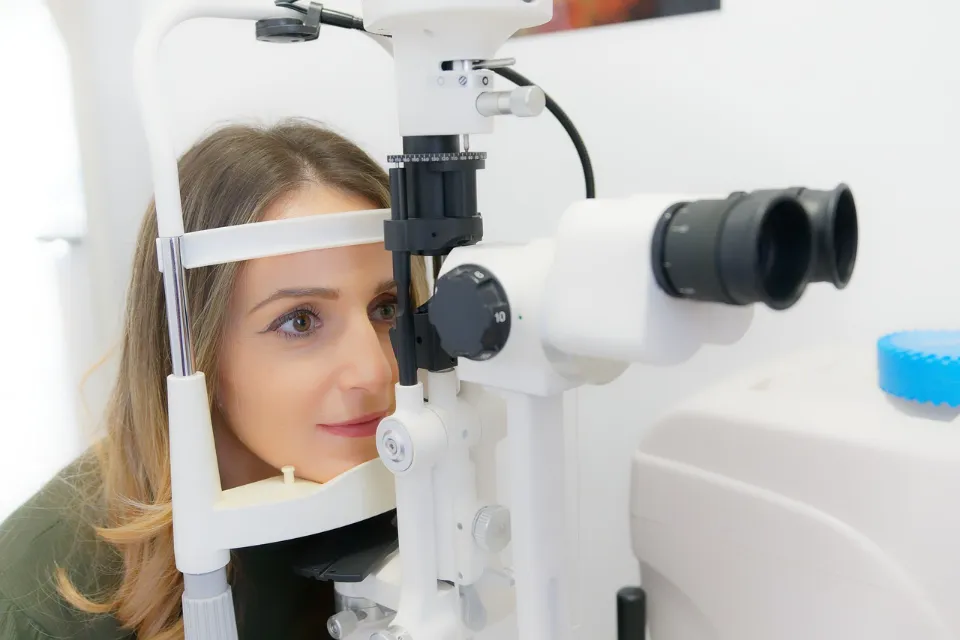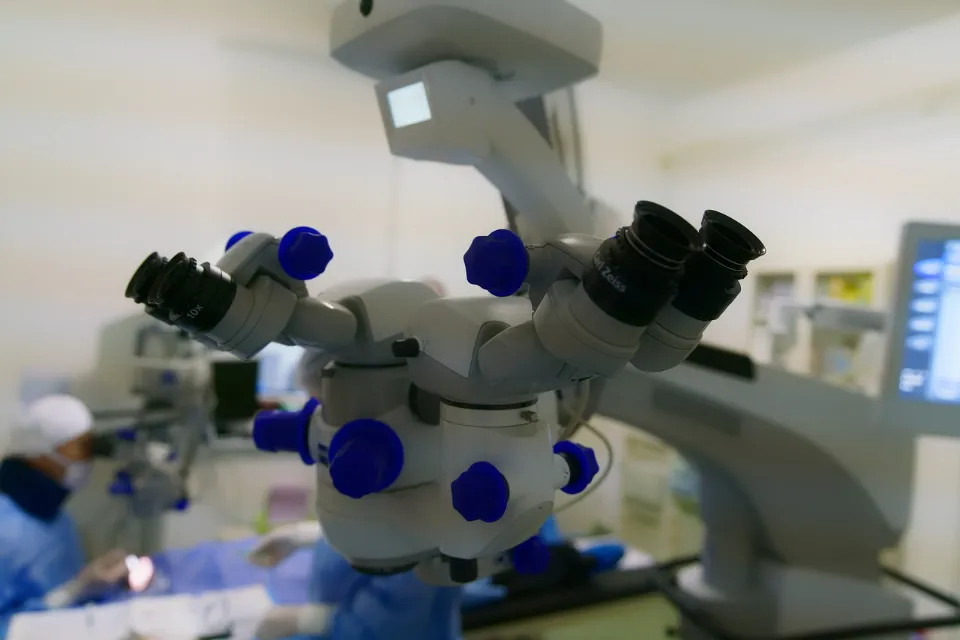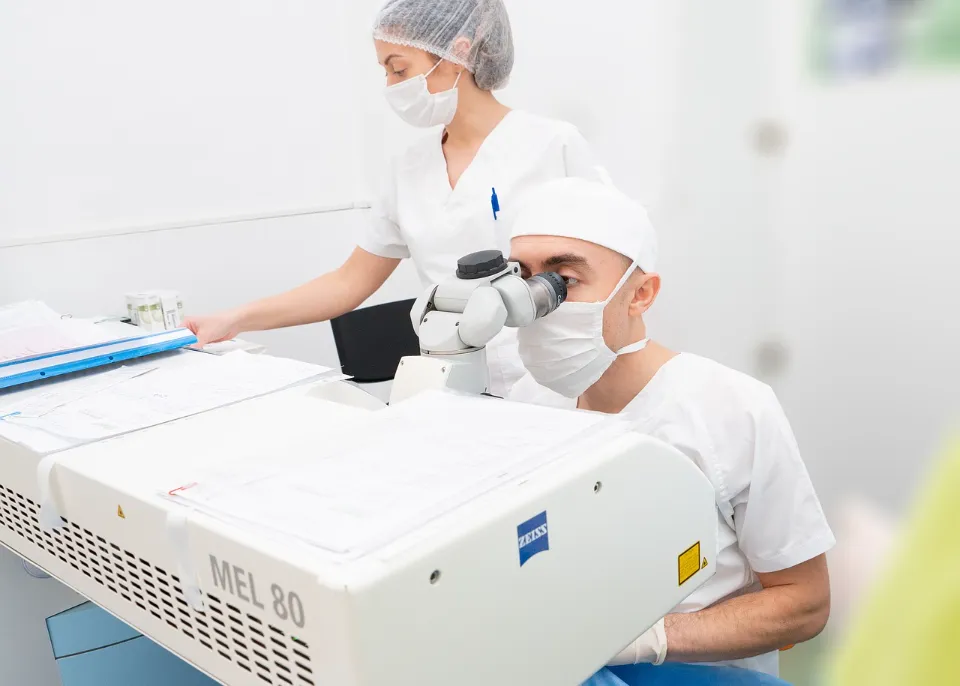Eye care professionals use a variety of tests to diagnose cataracts, such as a simple visual acuity test or pupil dilation. A battery of tests might be required by your ophthalmologist or optometrist before a diagnosis can be made.
The natural lens of the eye, which is situated behind the iris and pupil, becomes clouded in a cataract. As cataracts progress, they may enlarge and cover much of the lens, impairing your vision.
Do you want to know how to determine if you have a cataract with precision? You can find the solution by looking below.
What is a Cataract?
Cataracts are when the lens, a small transparent disc inside your eye, develops cloudy patches. These patches typically enlarge with time, leading to vision that is foggy and blurry and ultimately blindness.
Our lenses are typically like clear glass when we are young, allowing us to see through them. They start to become frosted as we age, like bathroom glass, and start to impair our vision.
Usually, both eyes are affected by cataracts. There is no guarantee that they will appear in both eyes at the same time or in exactly the same way. The ability to perform daily tasks like driving may be hampered by them, which are more prevalent in older adults.

Who Should Be Tested for Cataracts?
Cataract testing is typically included in a thorough eye exam that evaluates your vision and the health of your eyes. As advised by an eye care professional, these exams should be performed on all adults. As you get older, this becomes even more crucial. You might require testing earlier than your annual exam if you are showing signs of cataracts or are at risk of doing so.
Cataracts can cause many symptoms, including:
- Reduced visual clarity
- Colors appear faded
- Seeing halos around lights
- Requires more light to read or see detail
You are at increased risk of developing cataracts if:
- You are over the age of 55
- You have a family history of cataracts
- You have diabetes
- You spend a lot of time in the sun without eye protection1
In older individuals, cataracts are typical. About half of Americans aged 80 and older have cataracts or have undergone surgery to remove them2, but cataracts aren’t always related to aging. They can also develop:
- After an eye injury
- As a result of another eye disease
- After using certain medications, including steroids
- As a result of health problems such as diabetes3
Some children are born with cataracts. Inquire about cataract testing from your child’s doctor if you believe your child has a vision issue. This can assist in identifying the presence of a cataract, the type of cataract present, and whether cataract surgery or another treatment should be recommended.
How to Test for Cataracts?
Your doctor will examine your eyes, look over your medical history, and ask you about your symptoms in order to determine whether you have a cataract. Your doctor may conduct several tests, including:
Visual Acuity Test
An eye chart is used in a visual acuity test to assess how well you can read a string of letters. Your eyes are tested one at a time, while the other eye is covered. Your eye doctor will check your vision to see if it is 20/20 or if there are any signs of impairment using a chart or a viewing device with progressively smaller letters.
Slit-lamp Examination
Your eye doctor can magnify the structures at the front of your eye using a slit lamp. The cornea, iris, lens, and space between your iris and cornea are all illuminated by the microscope, which is also known as a slit lamp. The slit allows your doctor to view these structures in small sections, which makes it easier to detect any tiny abnormalities.

Pupil Dilation
Pupil dilation is a common test used to diagnose cataracts. When your eye is dilated, the pupil increases in size. Your healthcare provider will be able to see your entire lens as a result. Your doctor can tell if a cataract is affecting your vision quality by getting a clear view of the entire lens.
Retinal Exam
Your eye doctor will administer eye drops to dilate (open wide) your pupils in preparation for a retinal examination. This makes checking the retina (the back of your eyes) simpler. Your eye doctor can check your lens for indications of a cataract using a slit lamp or a specialized tool called an ophthalmoscope.
Applanation Tonometry
Your eye’s fluid pressure is measured during this test. To do this, a variety of devices are available.
Cataract Symptom Checklist
- Has the clarity or cloudiness of your vision changed noticeably from before?
- Do you have double vision?
- Do you have difficulty seeing at night?
- Do colors appear dimmer than they used to be?
- Do you need bright lights to read – particularly small print?
- Do bright lights, such as those from computers and the sun, make you uncomfortable?
- Over the last few years, has your prescription often changed?
- Are you over 60? (Cataract is more common in older individuals)
You might have a cataract if you answered “yes” to one or more of these symptoms. Have your eyes examined by an eye care professional as soon as possible to be sure.
Home Remedies for Cataracts
To deal with symptoms of cataracts until you decide to have surgery, try to:
- Make sure your eyeglasses or contact lenses are the most accurate prescription possible
- Use a magnifying glass to read if you need additional help reading
- Improve the lighting in your home with more or brighter lamps
- When you go outside during the day, wear sunglasses or a broad-brimmed hat to reduce glare
- Limit your night driving
Self-care measures might be beneficial initially, but as the cataract develops, your vision might get worse. Consider cataract surgery if your daily activities are being impacted by vision loss.
Conclusion
Your doctor may use a number of tests to identify cataracts. The benchmark is a vision test. It measures how well you can see at a specific distance. The visual acuity meter avoids the cataract that is projected onto your eye during a potential vision test, though.
Contrast sensitivity testing helps determine your clarity against the background of objects. Your healthcare provider may also perform tests that help visualize your eyes and lens.



